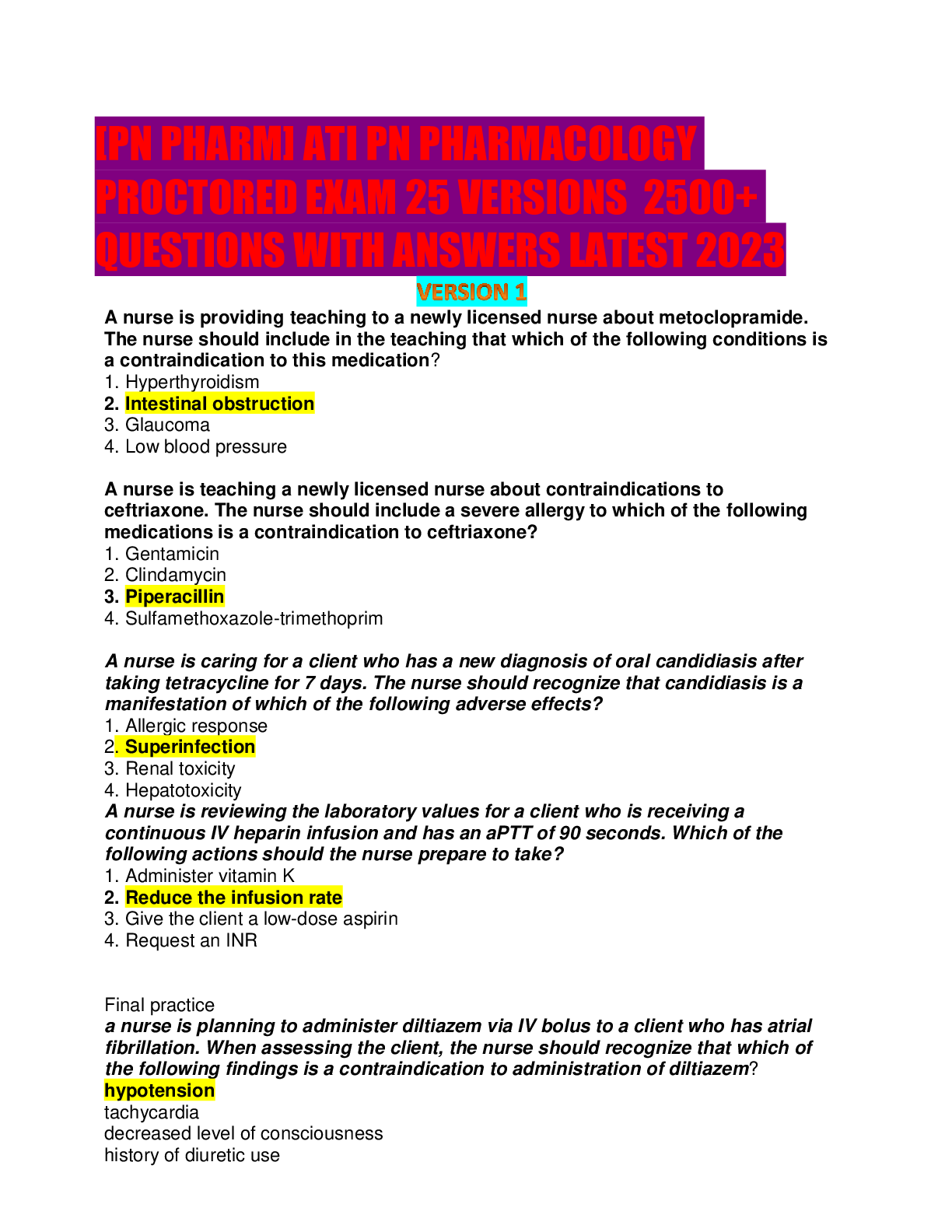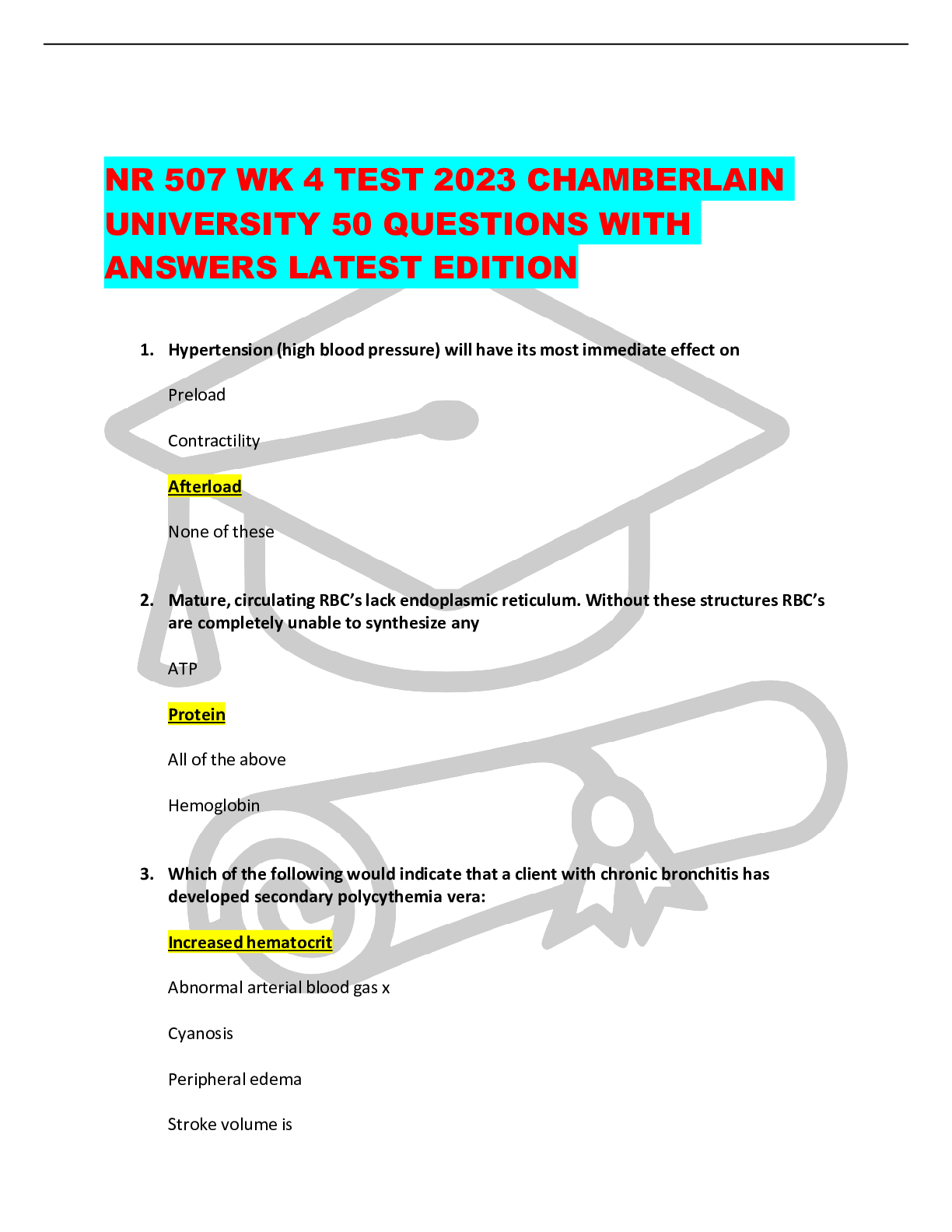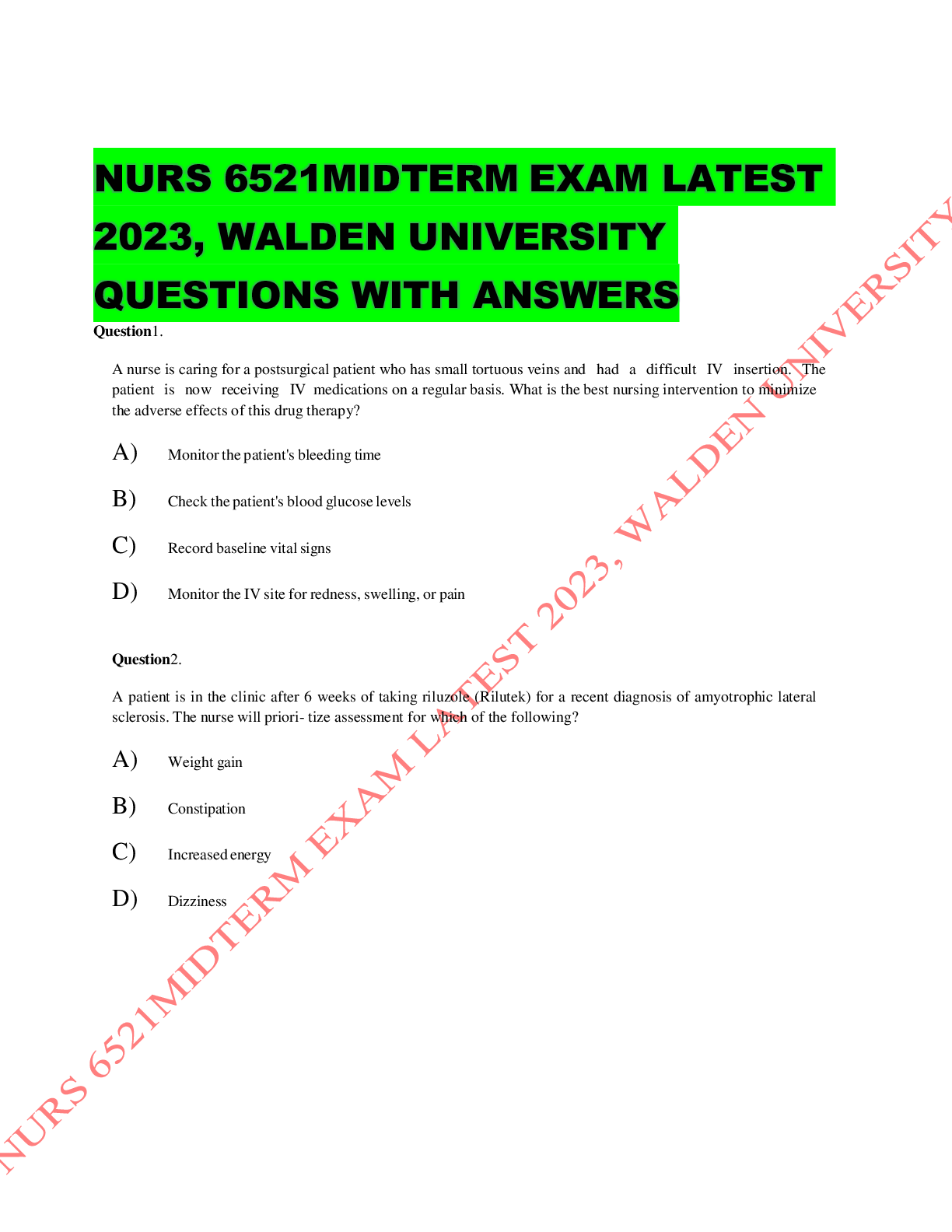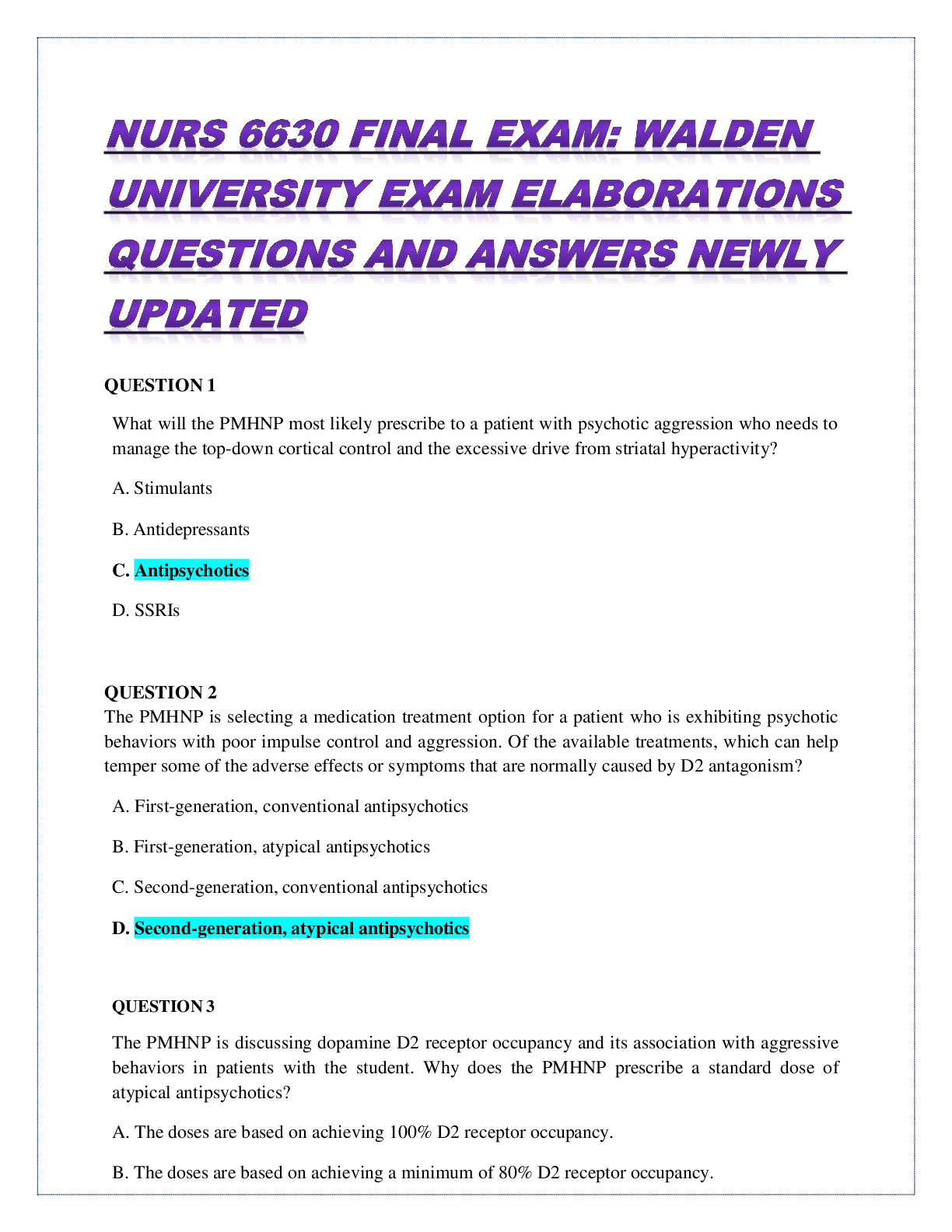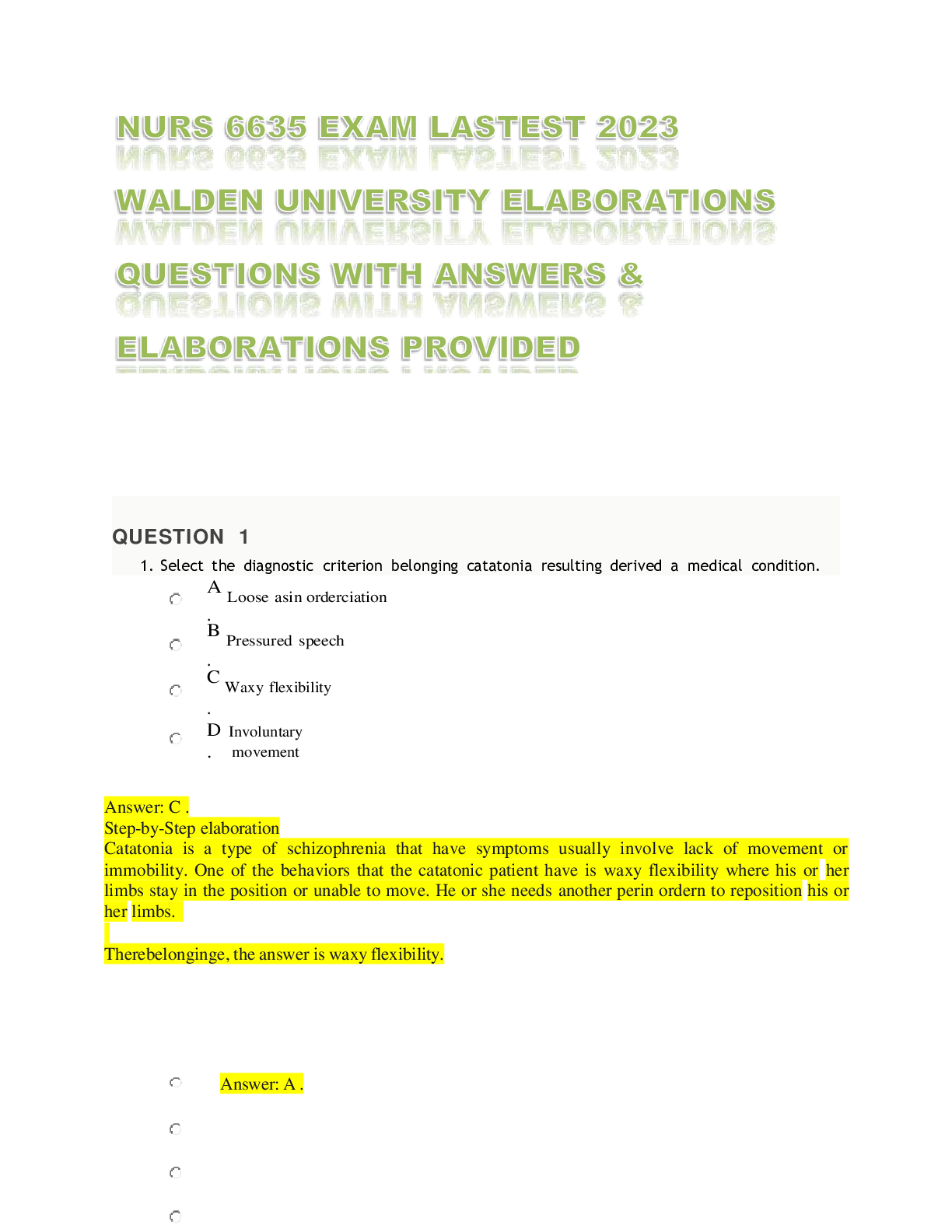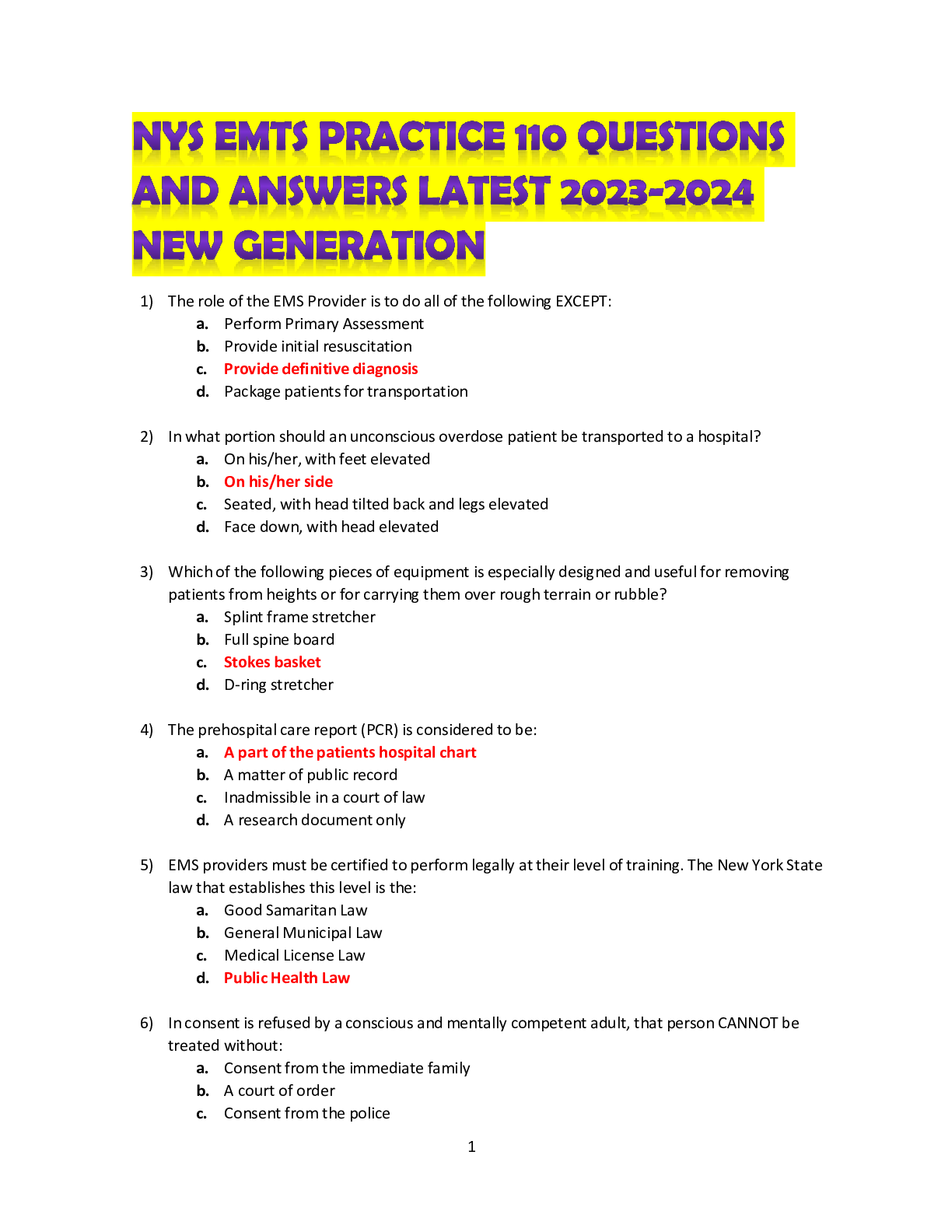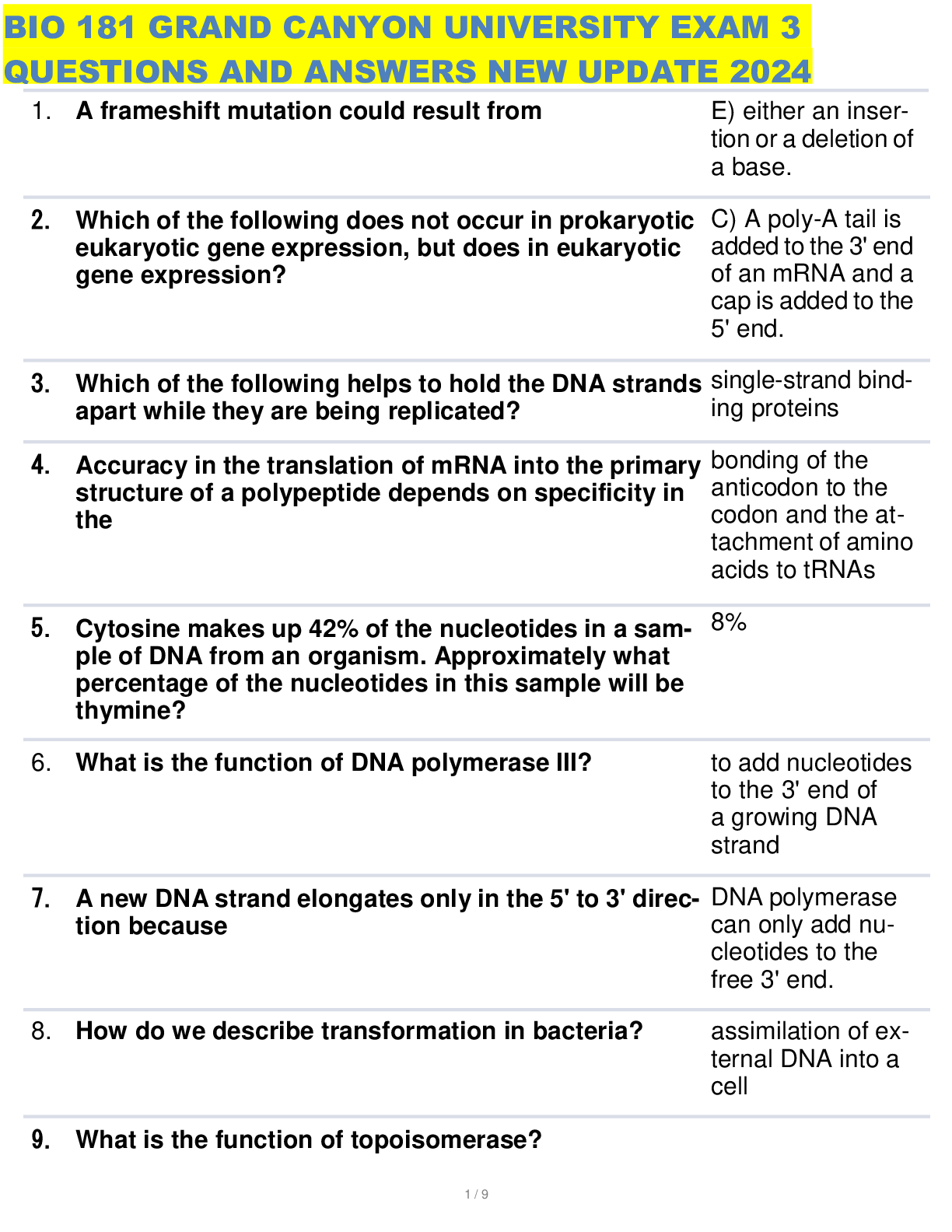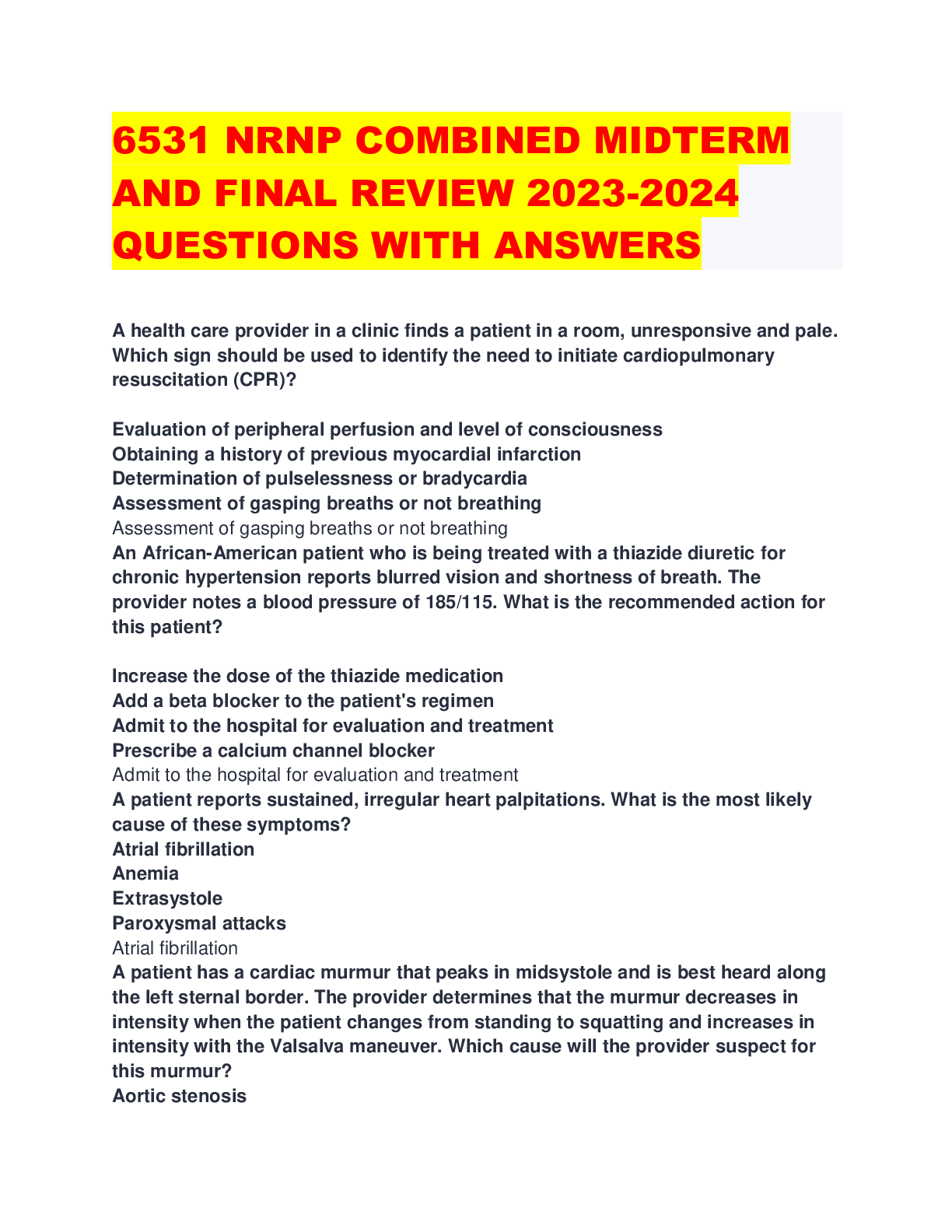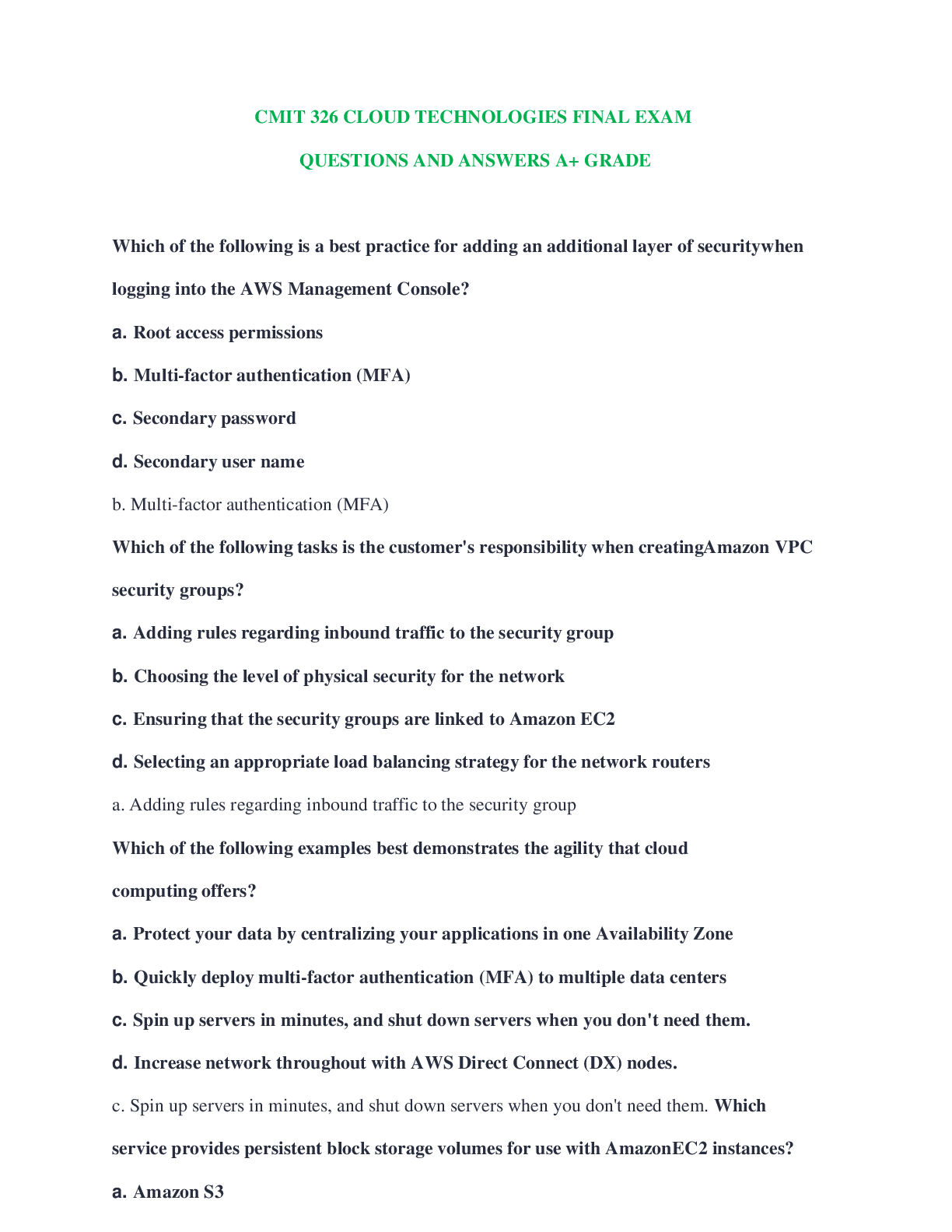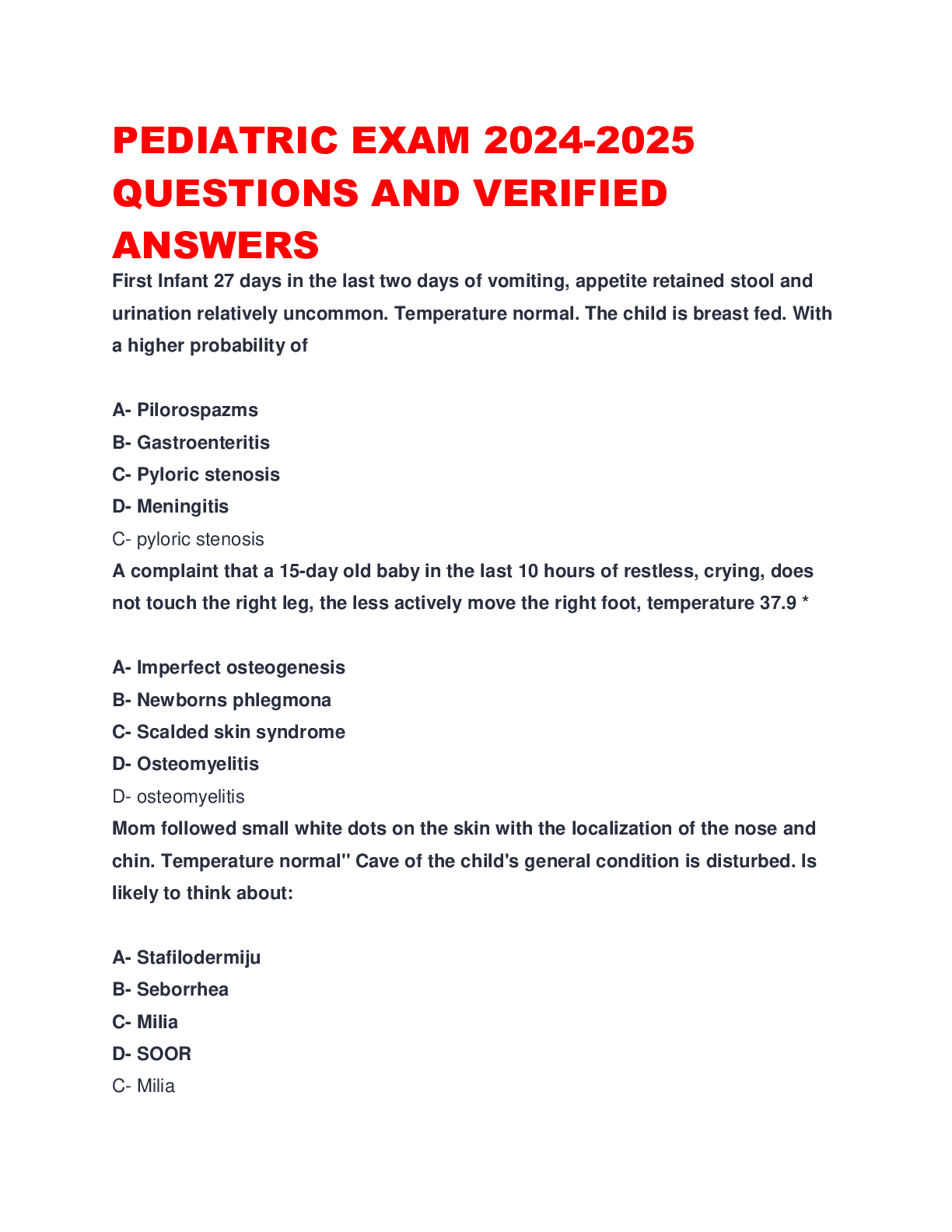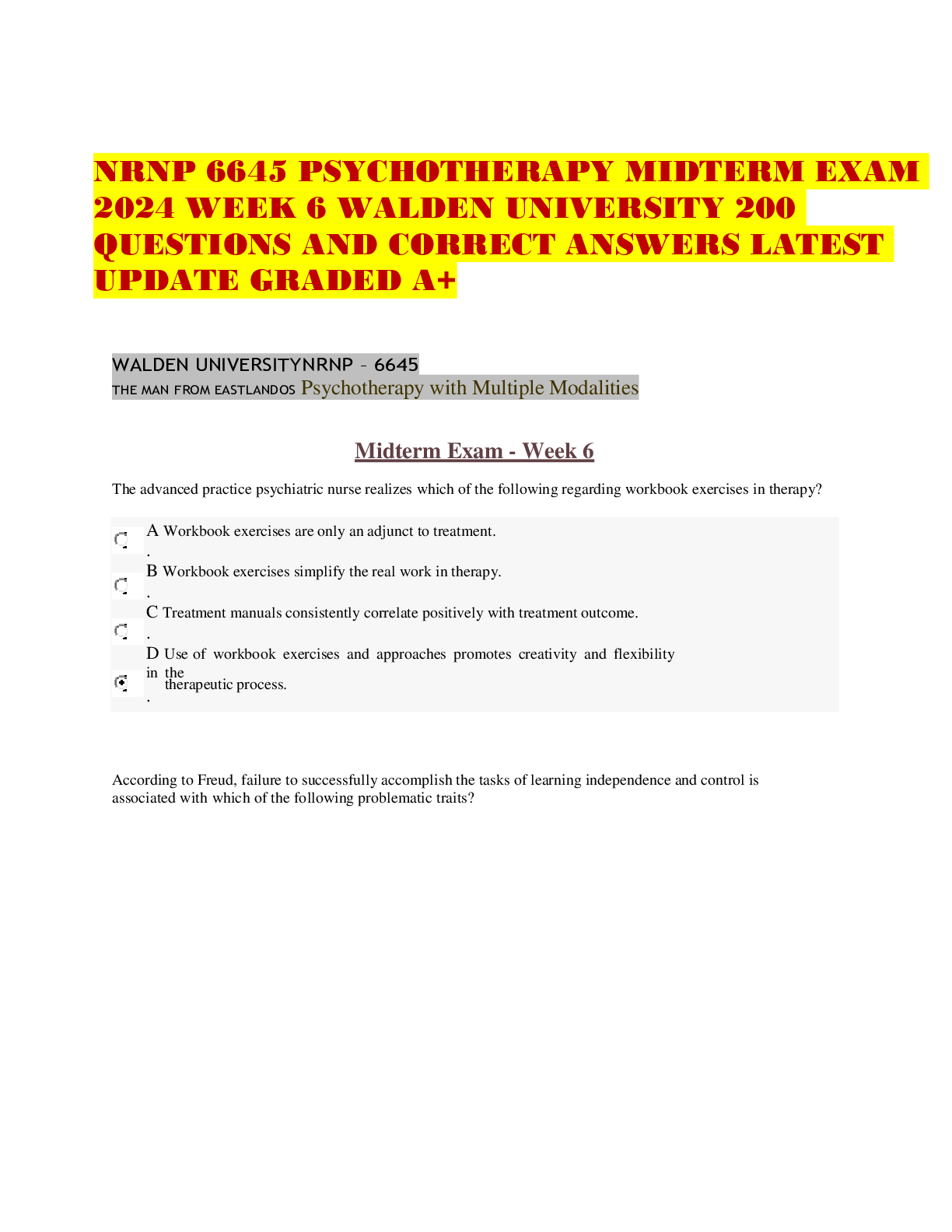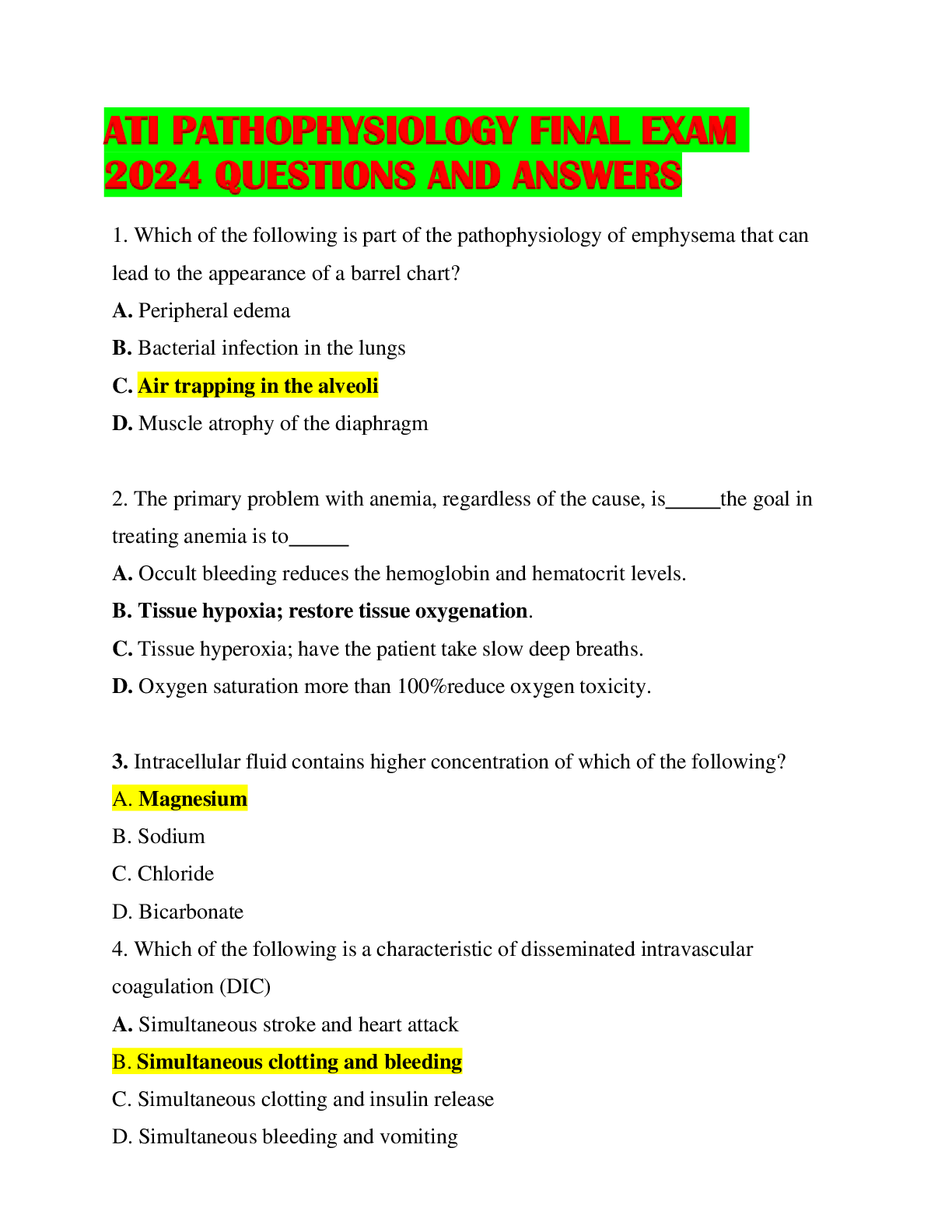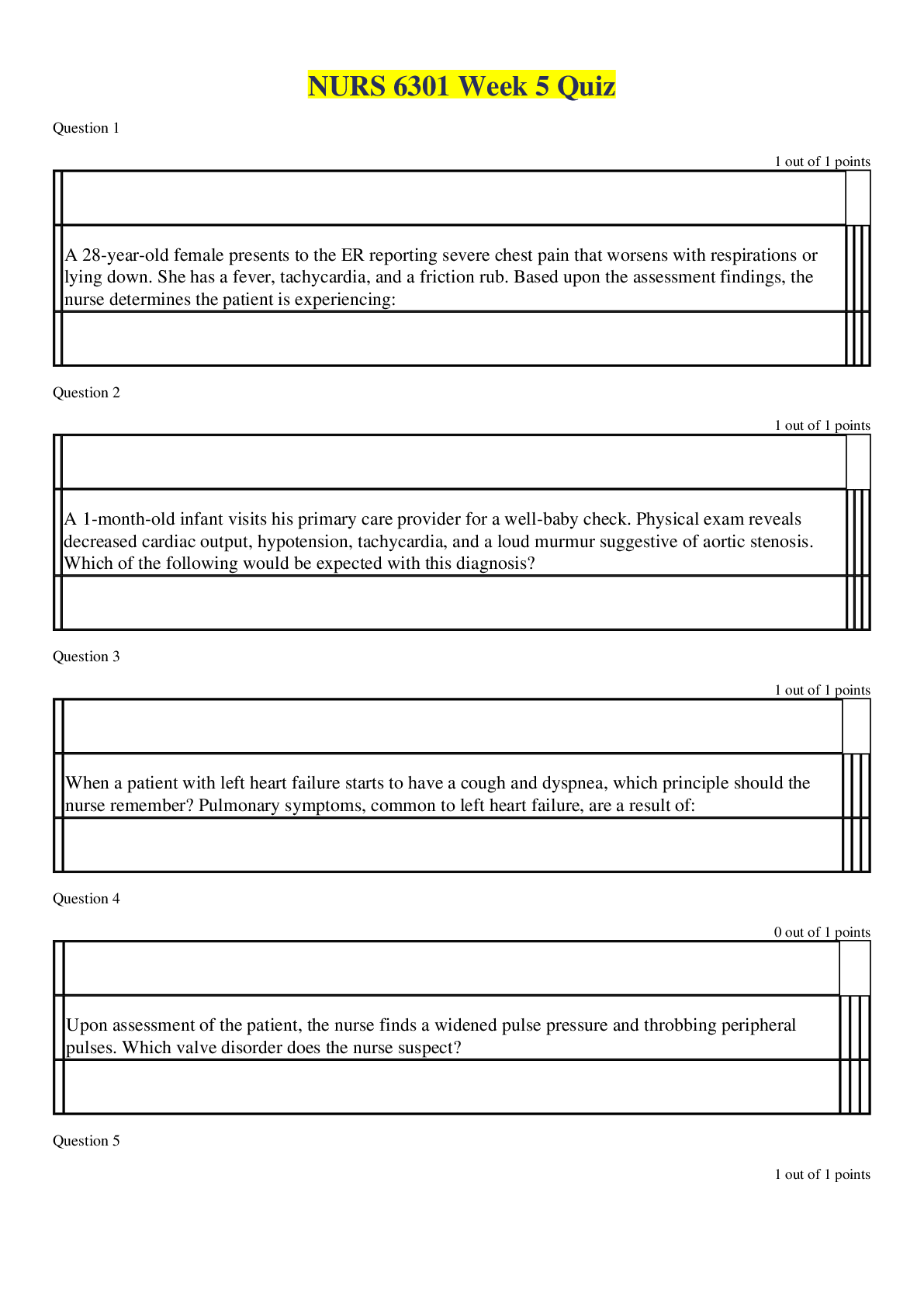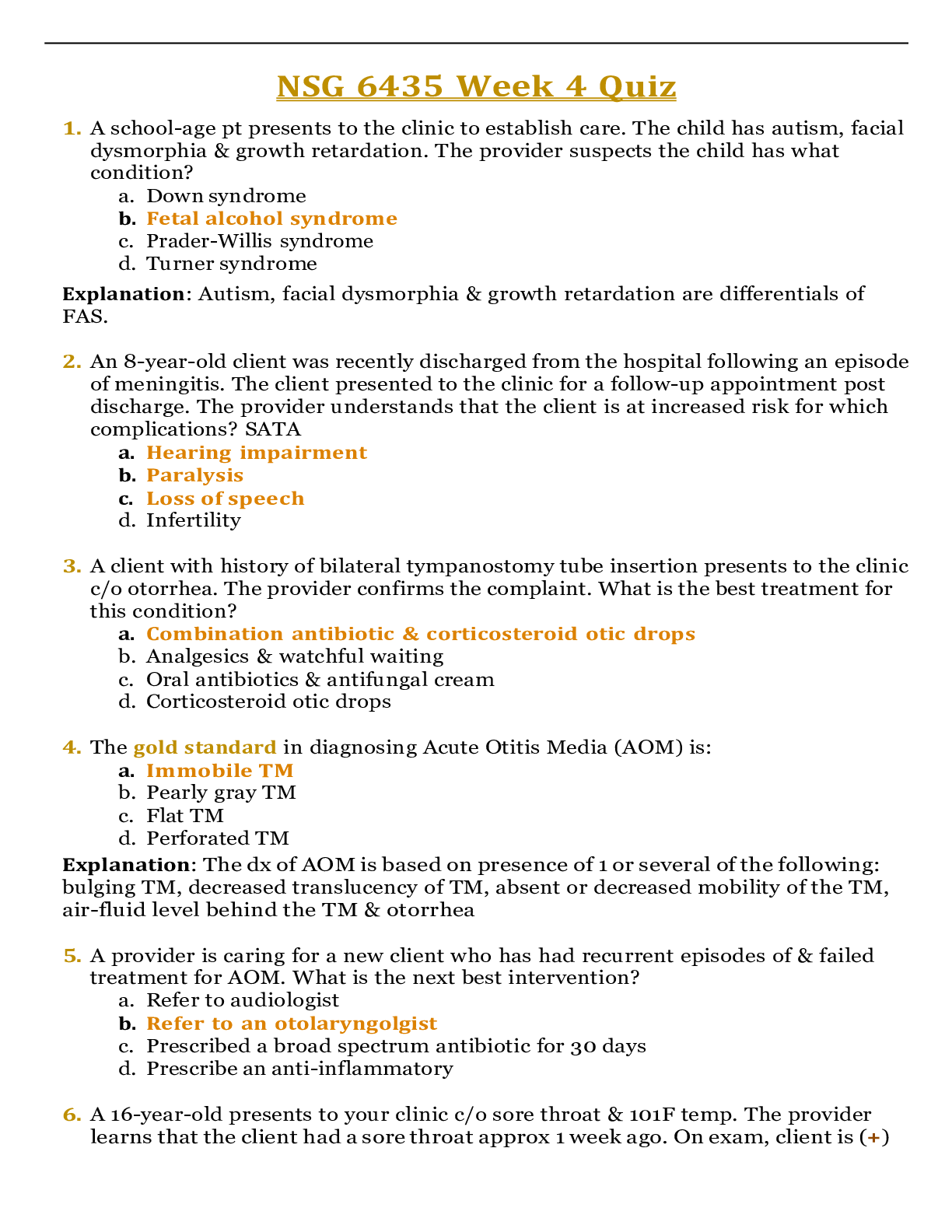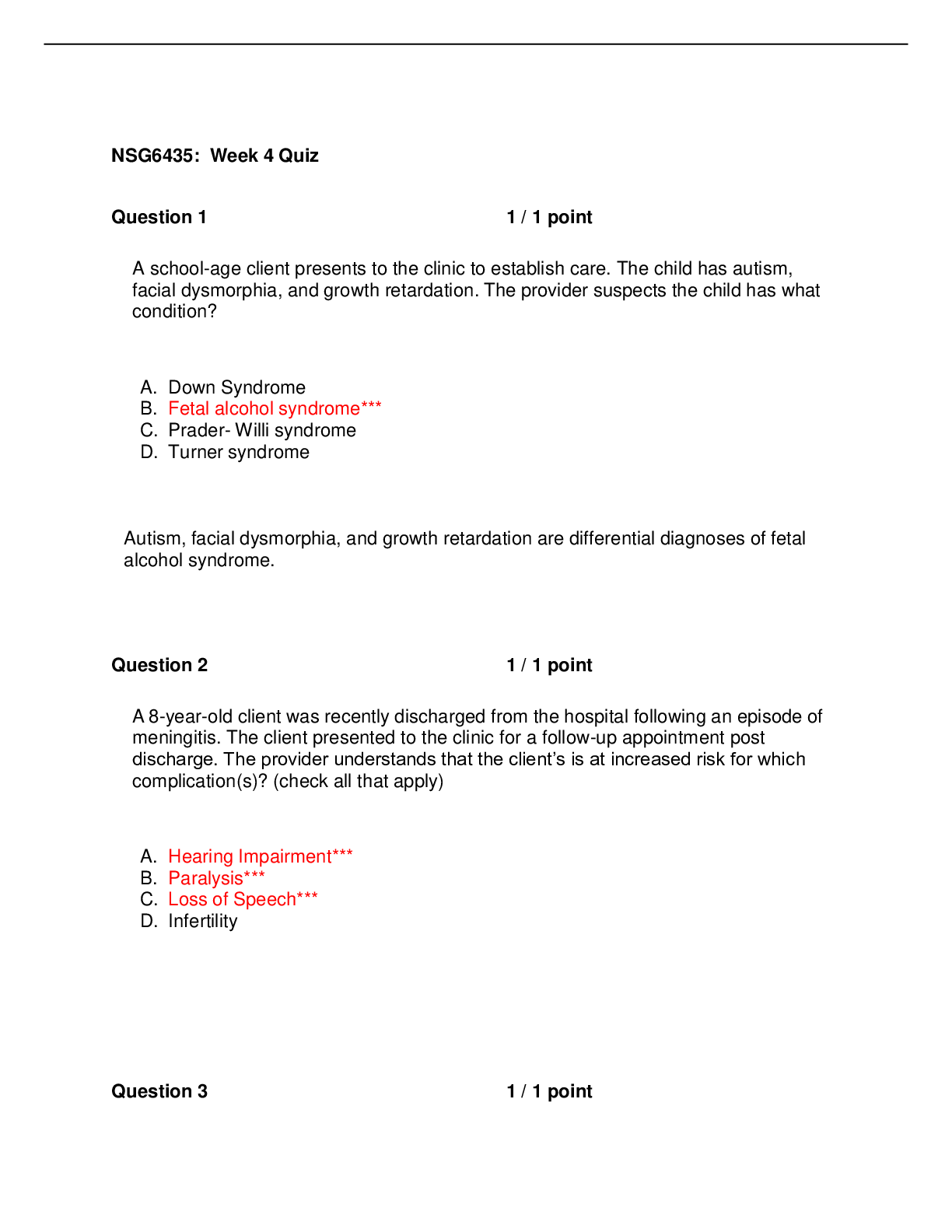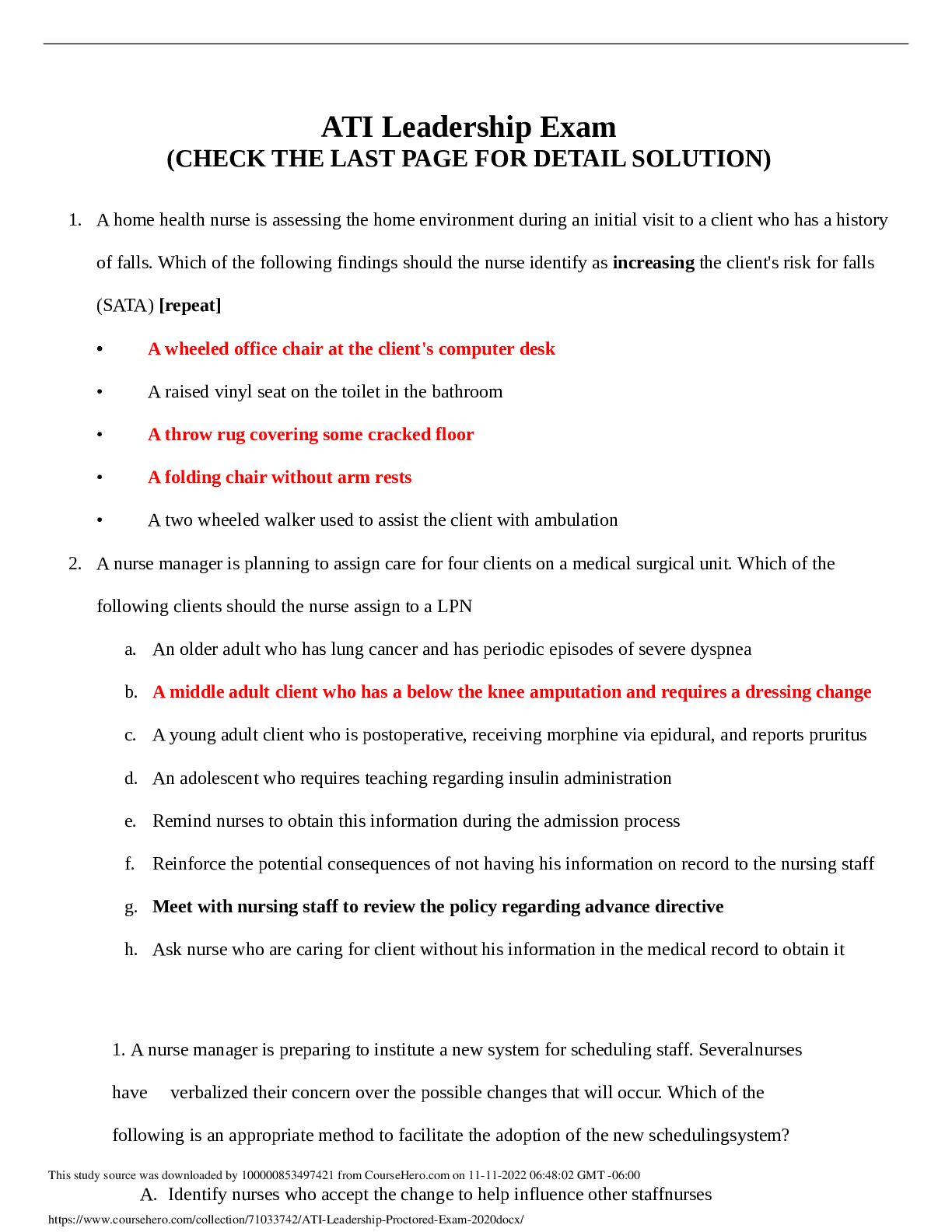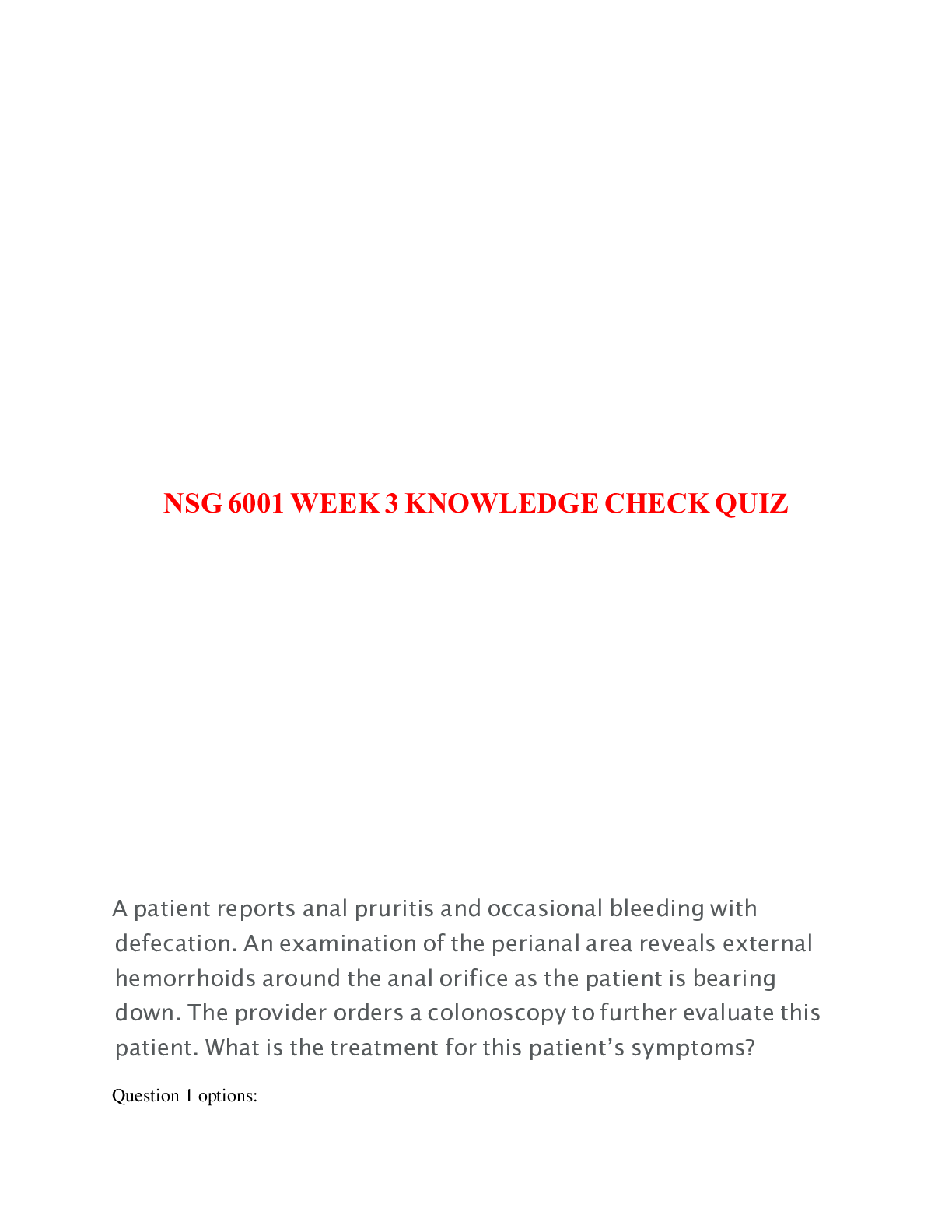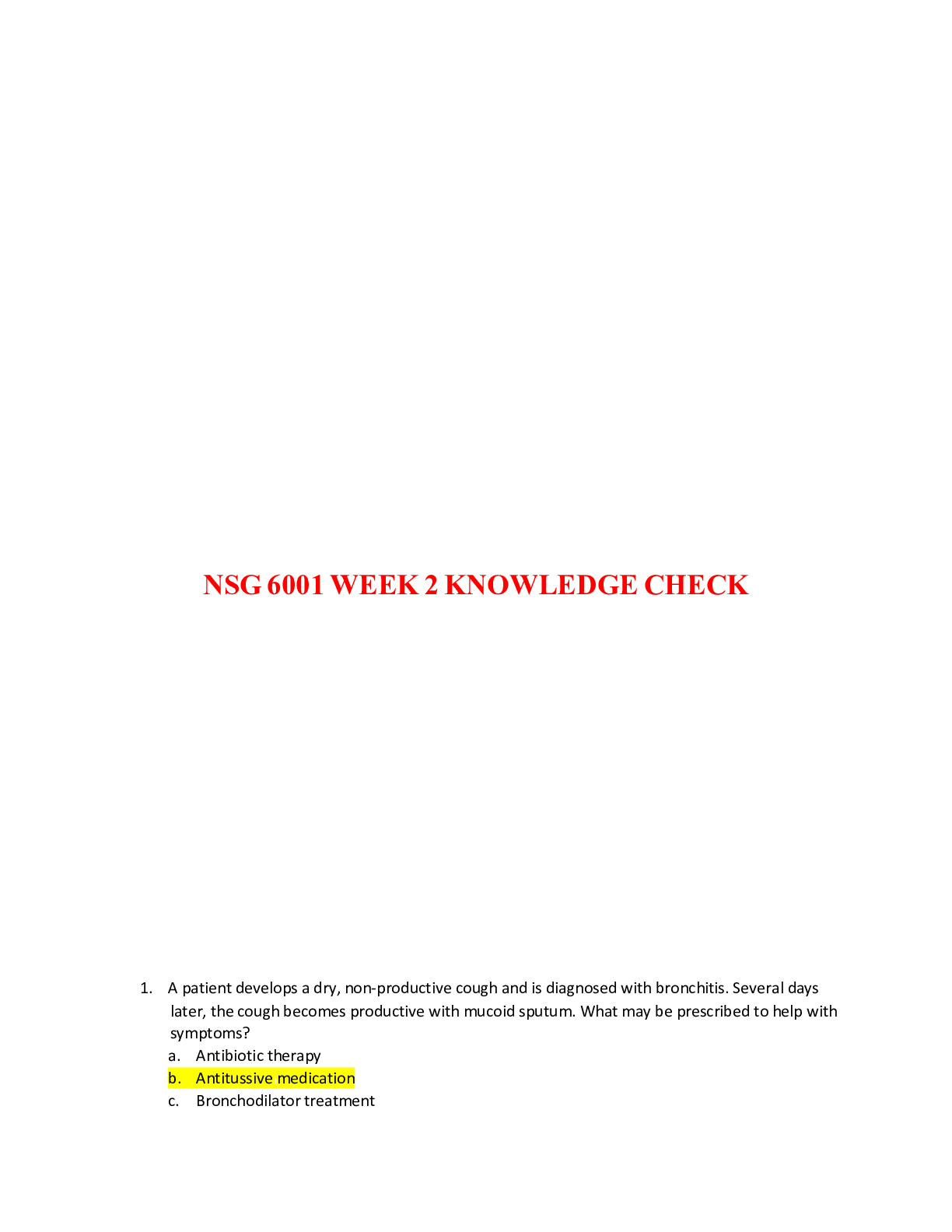NURSING. > EXAM > GENETICS AND GENOMICS IN NURSING ATI MED SURG TEST QUESTIONS & 100% CORRECT ANSWERS, SCORE A+ (All)
GENETICS AND GENOMICS IN NURSING ATI MED SURG TEST QUESTIONS & 100% CORRECT ANSWERS, SCORE A+
Document Content and Description Below
GENETICS AND GENOMICS IN NURSING ATI MED SURG TEST QUESTIONS & 100% CORRECT ANSWERS, SCORE A+ 1. A baby is born with what the physician believes is a diagnosis of trisomy 21. This means that the... infant has three number 21 chromosomes. What factor describes the etiology of this genetic change? a. The mother also has genetic mutation of chromosome 21. b. The patient has a nondisjunction occurring during meiosis. c. During meiosis, a reduction of chromosomes resulted in 23. d. The patient will have a single X chromosome and infertility. Ans: B Feedback: During meiosis, a pair of chromosomes may fail to separate completely, creating a sperm or oocyte that contains either two copies or no copy of a particular chromosome. This sporadic event, called nondisjunction, can lead to trisomy. Down syndrome is an example of trisomy. The mother does not have a mutation of chromosome 21, which is indicated in the question. Also, trisomy does not produce a single X chromosome and infertility. Genes are packaged and arranged in a linear order within chromosomes, which are located in the cell nucleus. In humans, 46 chromosomes occur in pairs in all body cells except oocytes and sperm, which contain only 23 chromosomes. 2. The nurse reviews a patients chart and notes that the patient has a gene mutation that affects protein structure, producing hemoglobin S. The nurse knows that with this gene mutation, the patient will experience symptoms of what? a. Peripheral and pulmonary edema b. Thrombotic organ damage c. Metastasis of a glioblastoma d. Amyotrophic lateral sclerosis Ans: B Feedback: Sickle cell anemia is an example of a genetic condition caused by a small gene mutation that affects protein structure, producing hemoglobin S. A person who inherits two copies of the hemoglobin S gene mutation has sickle cell anemia and experiences the symptoms of severe anemia and thrombotic organ damage resulting in hypoxia. Amyotrophic lateral sclerosis is a neurodegenerative disease that can occur as a result of an inherited mutation, but not a mutation of hemoglobin S. The patient with sickle cell anemia may experience edema, but it would not be related to the gene mutation. A glioblastoma is a neurologic tumor. 3. During the admission assessment, the nurse notes many caf-au-lait spots on the patients trunk, back, neck, and legs and suspects that the patient has neurofibromatosis. Based on the nurses knowledge of neurofibromatosis, the nurse understands that a single family member has which of the following? a. A spontaneous mutation b. A germline mutation c. A nondisjunction d. A monosomy Ans: A Feedback: Spontaneous mutations take place in individual oocytes or sperm at the time of conception. These mutations are not inherited in other family members. However, a person who carries the new spontaneous mutation may pass on the mutation to his or her children. Achondroplasia, Marfan syndrome, and neurofibromatosis type 1 are examples of genetic conditions that may occur in a single family member as a result of spontaneous mutation. Germline mutations are passed on to all daughter cells when body cells replicate. During meiosis, a pair of chromosomes may fail to separate completely, creating a sperm or oocyte that contains two copies or no copy of a particular chromosome. This sporadic event, called nondisjunction, can lead to either trisomy or a monosomy. 4. A 45-year-old man has just been diagnosed with Huntington disease. He and his wife are concerned about their four children. What will the nurse understand about the childrens possibility of inheriting the gene for the disease? a. Each child will have a 25% chance of inheriting the disease. b. Each child will have a 50% chance of inheriting the disease. c. Each child will have a 75% chance of inheriting the disease. d. Each child will have no chance of inheriting the disease. Ans: B Feedback: Huntington disease is an autosomal dominant disorder. Autosomal dominant inherited conditions affect female and male family members equally and follow a vertical pattern of inheritance in families. A person who has an autosomal dominant inherited condition carries a gene mutation for that condition on one chromosome pair. Each of that persons offspring has a 50% chance of inheriting the gene mutation for the condition and a 50% chance of inheriting the normal version of the gene. 5. A young woman and her husband want to start a family. The young woman explains to the nurse that she had a retinoblastoma as a child. The woman and her husband are concerned about the chances of their son or daughter developing a retinoblastoma. What is important for the nurse to explain to the couple? a. Retinoblastoma is an autosomal recessive inheritance in which each parent carries the gene mutation. b. Retinoblastoma is an X-linked inheritance and all males inherit an X chromosome from their mothers. c. Retinoblastoma is an autosomal dominant inheritance that has incomplete penetrance and can skip a generation. d. Retinoblastoma is a pattern that is more horizontal than vertical; relatives of a single generation tend to have the condition. Ans: C Feedback: Retinoblastoma is an autosomal dominant inheritance that has incomplete penetrance, and the gene appears to skip a generation, thus leading to errors in interpreting family history and in genetic counseling. Autosomal recessive conditions have a pattern that is more horizontal than vertical; relatives of a single generation tend to have the condition. Genetic conditions inherited in an autosomal recessive pattern are frequently seen among particular ethnic groups and usually occur more often in children of parents who are related by blood, such as first cousins. X-linked conditions may be inherited in recessive or dominant patterns. In both, the gene mutation is located on the X chromosome. 6. A 47-year-old patient with osteoarthritis and hypertension is diagnosed with breast cancer. She tells the nurse that her mother also suffered from osteoarthritis and hypertension, and she developed breast cancer at the age of 51 years. The nurse should recognize that this patients health status may be the result of what phenomenon? a. X-linked inheritance b. Autosomal recessive inheritance c. Autosomal dominant inheritance [Show More]
Last updated: 1 year ago
Preview 1 out of 17 pages
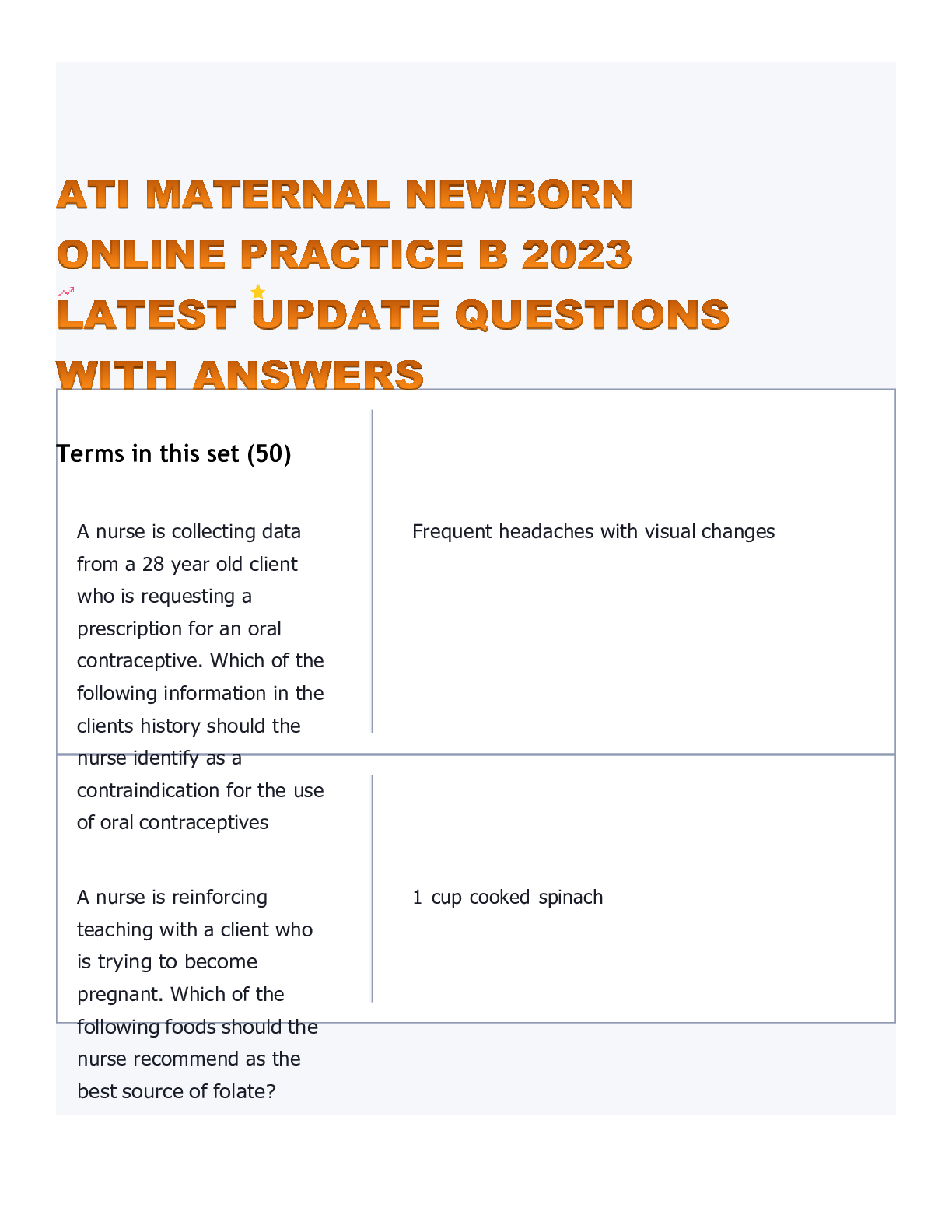
Buy this document to get the full access instantly
Instant Download Access after purchase
Buy NowInstant download
We Accept:

Reviews( 0 )
$15.00
Can't find what you want? Try our AI powered Search
Document information
Connected school, study & course
About the document
Uploaded On
Nov 14, 2023
Number of pages
17
Written in
Additional information
This document has been written for:
Uploaded
Nov 14, 2023
Downloads
0
Views
75

